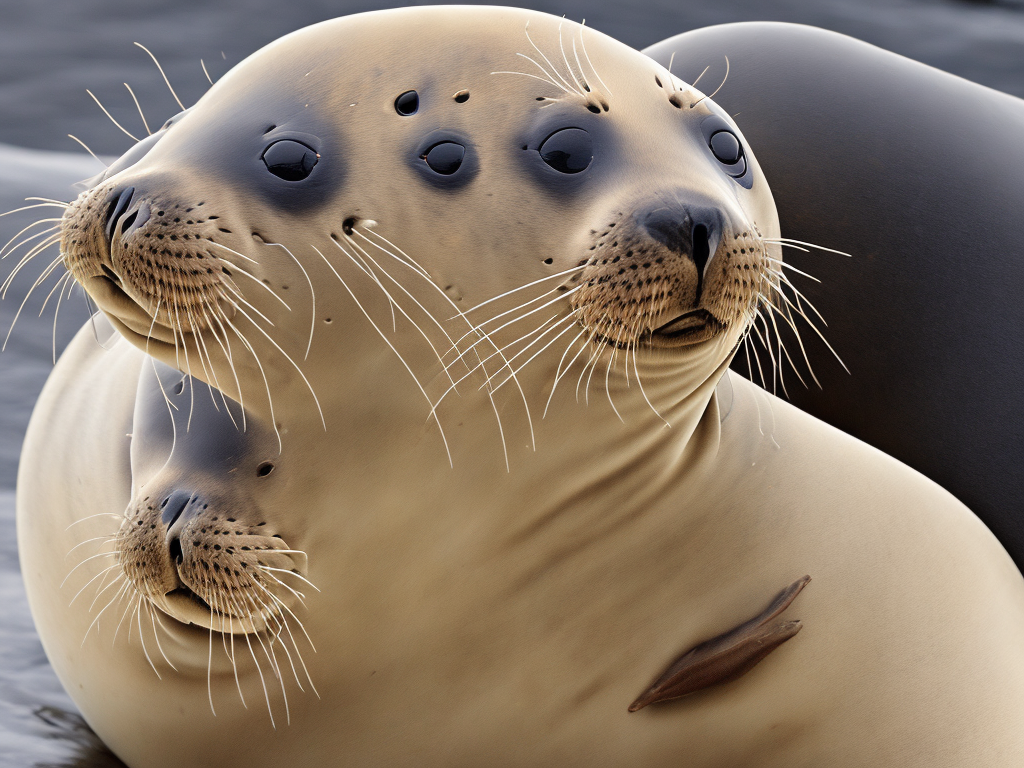
Seals and sea lions are two aquatic mammals that are often confused with one another. Though they do share many similarities, there are a number of key differences between these two animals. In this article, we’ll take a closer look at the characteristics of seals and sea lions to help you better understand the differences between the two.
Physical Differences
One of the first things you’re likely to notice when comparing seals and sea lions is the difference in size. Sea lions are typically larger than seals, with adult females weighing in at around 220-260 kg (485-575 lb) and adult males weighing in at around 400-600 kg (880-1,320 lb). Seals, on the other hand, are generally smaller, with adult females weighing in at around 100-150 kg (220-330 lb) and adult males weighing in at around 200-300 kg (440-660 lb).
In addition to their size differences, seals and sea lions also have several physical differences in their appearance. Seals have shorter front flippers that they use to steer themselves through the water, while sea lions have long, powerful front flippers that they use to propel themselves through the water. Sea lions also have visible ear flaps on the sides of their heads, which seals do not.
Habitat Differences
Seals and sea lions also differ in the habitats in which they live. Seals tend to prefer colder water and are found in both the Arctic and Antarctic regions, as well as in colder waters stretching down the coasts of North America, Europe, and Asia. Sea lions, on the other hand, are generally found in warmer, temperate waters, along the coasts of North and South America, Africa, Australia, and New Zealand.
Behavioral Differences
Seals and sea lions also differ in their behavior. Seals tend to be more solitary animals, and can spend up to 80% of their time in the water. They come onto land to rest, breed, and molt, but spend most of their time in the water hunting for food. Sea lions, on the other hand, are more social animals, and can be seen in large groups on rocky shores or in the water. They also spend more time on land than seals, typically sunning themselves on rocks or beaches.
Diet Differences
Although the diets of seals and sea lions vary depending on the species and geographic location, there are some general differences between the two. Seals typically feed on fish, such as salmon, herring, and cod, as well as on squid and small crustaceans. Sea lions, on the other hand, tend to feed more on larger fish, such as tuna, as well as on squid, octopus, and even crustaceans.
Reproduction Differences
Seals and sea lions also differ in their reproductive behavior. Seals breed and give birth on the ice or on rocky shores, and females typically give birth to a single pup each year. The male seals then leave the females to raise the pups on their own. Sea lions, on the other hand, breed and give birth on sandy beaches, and females typically give birth to one or two pups each year. Male sea lions are more involved in the care of the pups than male seals, and will even take turns guarding the young while the females hunt for food.
In conclusion, there are several key differences between seals and sea lions, including their size, physical appearance, habitat preferences, behavior, diet, and reproductive behavior. While there are some similarities between the two, such as their aquatic nature and their status as mammals, these differences help to set them apart from one another and make them unique creatures in their own right. Whether you’re watching seals basking on the ice in Antarctica or sea lions frolicking on the beaches of California, taking the time to appreciate these incredible animals can make for a truly unforgettable experience.
 Self-Instruct
Self-Instruct